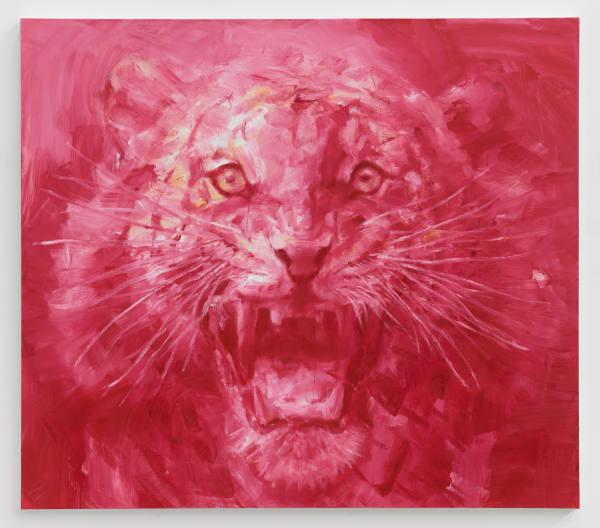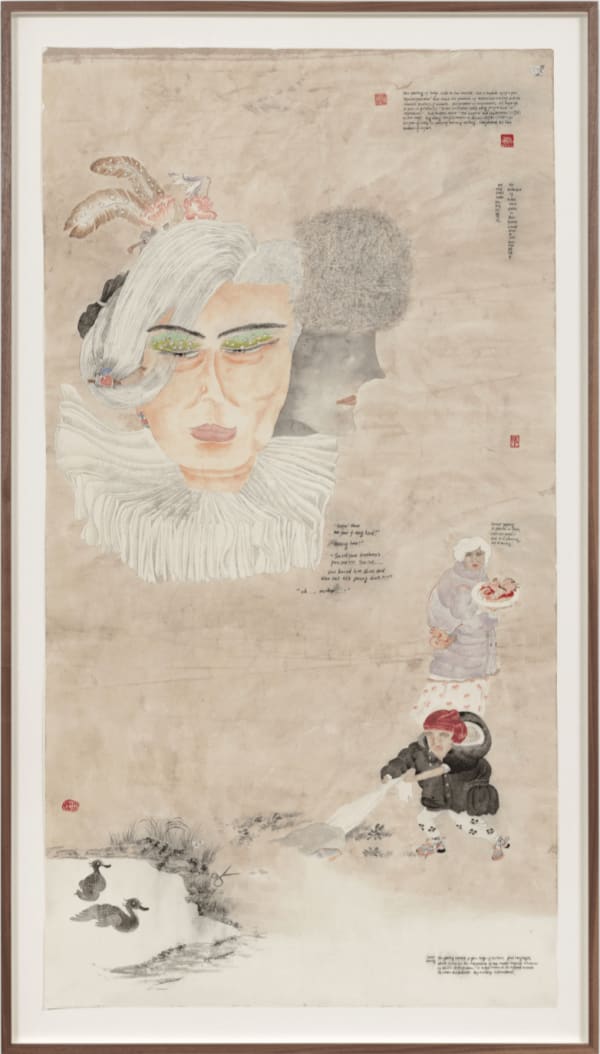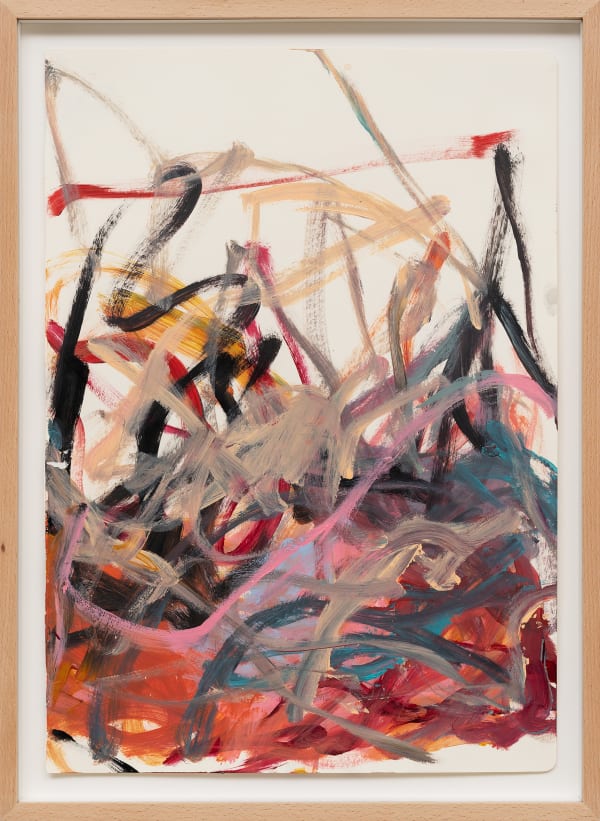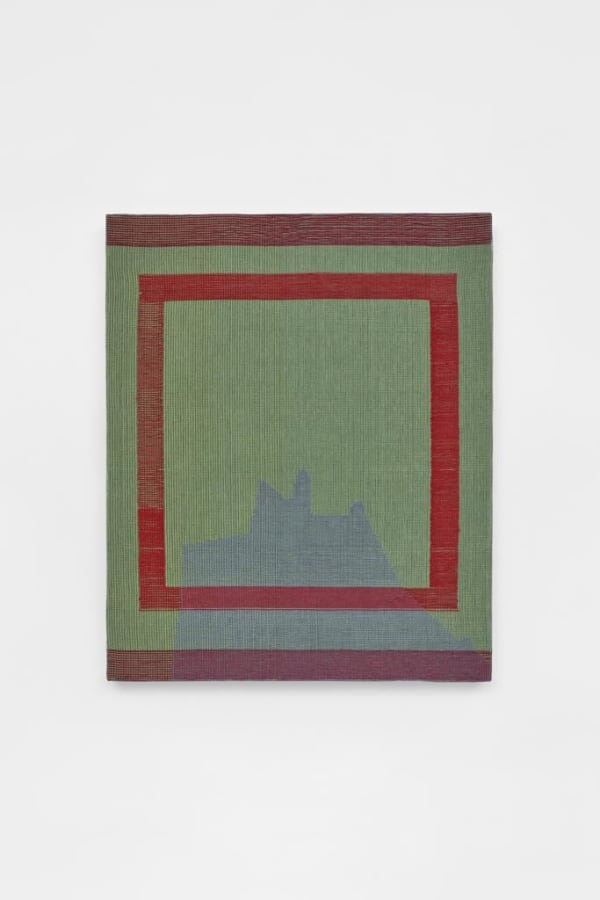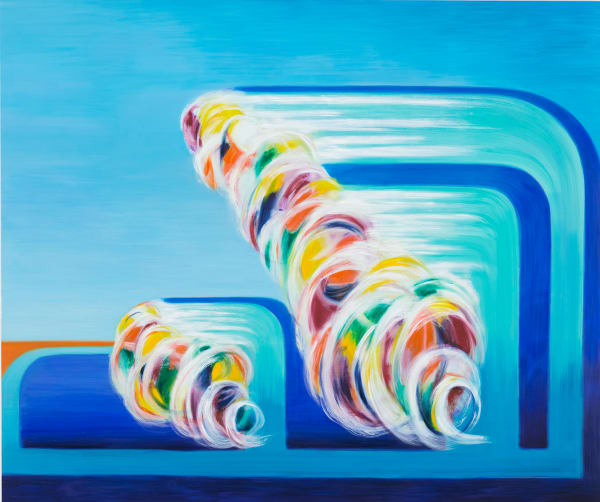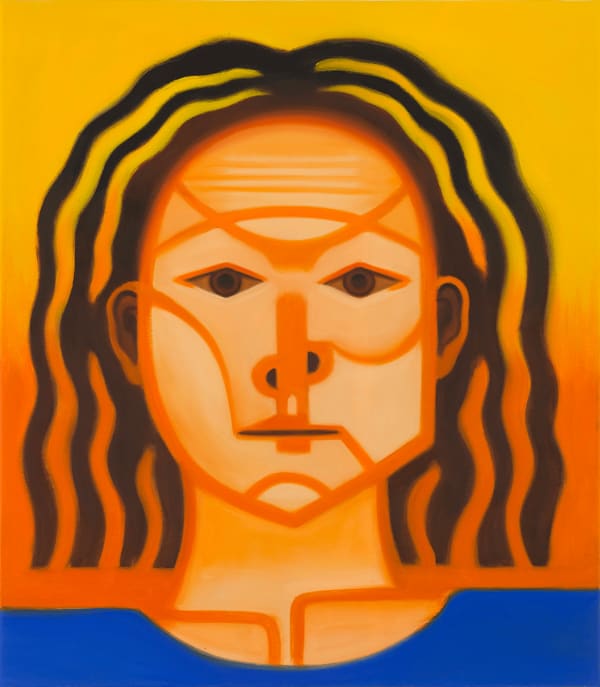-

-
Ground Floor: Marguo Collection
-
Designed as an introduction, the ground floor of the townhouse presents a selection of artworks from the Marguo collection sprawled across an active domestic environment in which visitors are invited to gather and exchange and find respite from the bustle of the island.Featuring works made within the last five years in various media spanning painting, drawing, sculpture, and ceramics, Home Run considers the art historical tradition of genre painting through a contemporary lens. Genre painting refers to the pictorial representation of scenes from everyday life ('petits genre') and 'grands genre', referring to historical and religious paintings and portraits of dignified subjects.
-
-
 Yan Pei-MingTête de tigre rouge (Red tiger head), 2022Oil on canvas220 × 250 cm
Yan Pei-MingTête de tigre rouge (Red tiger head), 2022Oil on canvas220 × 250 cm
87 × 98 1/2 in -
 Ángela LeyvaBilis negra 02, 2022Oil and transfer on linen120 x 100 cm (47 1/4 x 39 3/8 in)
Ángela LeyvaBilis negra 02, 2022Oil and transfer on linen120 x 100 cm (47 1/4 x 39 3/8 in) -
 ZHAI Liang两岸猿声啼不住 With Monkeys’ Sad Adieus the Riverbanks Are Loud, 2018绢本水彩 Watercolor on silk30 x 30 cm
ZHAI Liang两岸猿声啼不住 With Monkeys’ Sad Adieus the Riverbanks Are Loud, 2018绢本水彩 Watercolor on silk30 x 30 cm
11 3/4 x 11 3/4 in -
 Evelyn Taocheng WangApocalypse Bury Alive, 2021Calligraphy ink, mineral color, pigments, and artist's seal on paper, mounted on paper192 x 109.5 x 5 cm
Evelyn Taocheng WangApocalypse Bury Alive, 2021Calligraphy ink, mineral color, pigments, and artist's seal on paper, mounted on paper192 x 109.5 x 5 cm
75 5/8 x 43 1/8 x 2 in (framed) -
 Heidi LauMoon Chasing, 2023Glazed ceramic30.5 x 30.5 x 10.2 cm (12 x 12 x 4 in)
Heidi LauMoon Chasing, 2023Glazed ceramic30.5 x 30.5 x 10.2 cm (12 x 12 x 4 in) -
 Martha TuttleWho knows about granite?, 2021Wool, silk, dye, graphite, and pigment182.9 x 121.9 cm (72 1/8 x 48 in)
Martha TuttleWho knows about granite?, 2021Wool, silk, dye, graphite, and pigment182.9 x 121.9 cm (72 1/8 x 48 in) -
 HAN BingUntitled, 2022Oil on canvas27 x 22 cm (10 5/8 x 8 5/8 in)
HAN BingUntitled, 2022Oil on canvas27 x 22 cm (10 5/8 x 8 5/8 in)
-
-
-
The usual subjects associated with genre painting are present in Home Run: animals, wildlife and flora, elements and materials of the natural world, familiar depictions of anonymous individuals, but also vibrant expressions of inner life, and the mundane phenomena of everyday life itself, manipulated and transformed through the material experimentation.
The act of consecrating time and materials to mundane or profane scenes characteristic of genre painting is demonstrative of a certain high-low subversion, reflected here in the exhibition site, where the lines between public and domestic space are blurred. It gave primacy to common materials and quotidian experiences and challenged the conventions of 'high art' to reflect the daily environments, textures, and labors of which lived experience consists of. -
-
 Kelly AkashiTime Twine (Lily), 2022Hand-blown glass, sand-blasted stainless steel77 x 102 x 86 cm (30 1/4 x 40 1/8 x 33 7/8 in)
Kelly AkashiTime Twine (Lily), 2022Hand-blown glass, sand-blasted stainless steel77 x 102 x 86 cm (30 1/4 x 40 1/8 x 33 7/8 in) -
 Minjung KimAlveare, 2014Mixed media on mulberry hanji paper
Minjung KimAlveare, 2014Mixed media on mulberry hanji paper
75 x 105.5 x 4.5 cm (29 1/2 x 41 1/2 x 1 3/4 in) -
 ZHANG RuyiIndividual Plant —32 一株—32, 2019Concrete, pigment, ceramic tiles, wood panel, metal54 x 41 x 30 cm (21 1/4 x 16 1/8 x 11 3/4 in)
ZHANG RuyiIndividual Plant —32 一株—32, 2019Concrete, pigment, ceramic tiles, wood panel, metal54 x 41 x 30 cm (21 1/4 x 16 1/8 x 11 3/4 in) -
 Alexander CarverThe Animal Surgeon, 2021Oil on linen195.5 x 169.3 x 3.2 cm (77 x 66 1/2 in)
Alexander CarverThe Animal Surgeon, 2021Oil on linen195.5 x 169.3 x 3.2 cm (77 x 66 1/2 in) -
 Wade TullierSpotted Rabbit with Fruit, 2021Ceramic, glaze17.8 x 17.8 x 29.2 cm
Wade TullierSpotted Rabbit with Fruit, 2021Ceramic, glaze17.8 x 17.8 x 29.2 cm
7 x 7 x 11 1/2 in -
 HAN Bing1st arr, 2018Acrylic and oil on linen177.8 x 139.7 cm (70 x 55 in)
HAN Bing1st arr, 2018Acrylic and oil on linen177.8 x 139.7 cm (70 x 55 in) -
 Naotaka HiroUntitled (Air), 2022Canvas, fabric dye, oil pastel274 x 213 cm (107 7/8 x 83 7/8 in)
Naotaka HiroUntitled (Air), 2022Canvas, fabric dye, oil pastel274 x 213 cm (107 7/8 x 83 7/8 in) -
 Mai-Thu PerretStand on the crest of a high, high peak; walk the bottom of the deep, deep sea, 2017Glazed ceramic42.5 x 53.3 x 11.4 cm (16 3/4 x 21 x 4 1/2 in)
Mai-Thu PerretStand on the crest of a high, high peak; walk the bottom of the deep, deep sea, 2017Glazed ceramic42.5 x 53.3 x 11.4 cm (16 3/4 x 21 x 4 1/2 in)
-
-
-
-
-
On the upper levels of the house, Miranda Fengyuan Zhang, Yang Semine, and Ziping Wang respectively explore and experiment with both ancient and modern technologies, developing processes of weaving, transparency, and visual assemblage to simultaneously harness and deconstruct the worlds around them.
-
1st Floor: Miranda Fengyuan Zhang
-
In Miranda Fengyuan Zhang's work, material dominates, and ideas follow. She perceives the color, texture and temperature of the wool and lets the material tolled the way to mystical enlightenment. Her work creates a Garden of Eden, where she emerges herself in a kingdom of colors, cool evenings in the desert, or quiet afternoons over the lake. She further extends the palace of her memories to capture the hidden power within seemingly mundane objects.Like traditional Chinese ink paintings, Zhang’s way of working does not allow fixing or adjusting but rather is an improvised process led by momentary inspiration and technical skills. Although the works do not portray the East, her artistic thinking is innately Eastern.
-
-
-
2nd Floor: Yang Semine
-
For Casa Marguo's inaugural exhibition, Yang presents a new series of paintings showing, among other subjects, the composition of Koi fish in ponds, reminiscent of colorful Matisse-like dance parties. Located between graphic, decorative motifs, and historical Asian ink paintings, her bright compositions have a seasonal character that ties together subjects and colors related to different moments of the year.
-
-
Yang's practice is shaped by an interest in the natural world and our inextricable place in its ecology. The themes of metamorphosis, repetition, and difference are particularly present in her Dragonfly series, a meditation on light, color, weight, volume, transparency, and form – the fundamentals of painting. Yang’s compositions often begin as digital drawings rendered on tablets before they are translated back into the material and organic world, wherein they become a surface for the artist’s associative and intuitive experimentations.
-
-
THIRD FLOOR: ZIPING WANG
-
Drawing on the visual languages of advertising and illustration, Ziping Wang is inspired by 'the elusive nature of modified reality', and the overwhelming experience of living within an attention economy in the digital era, in which we are relentlessly bombarded by pop-ups, banners, notifications, and endlessly refreshing feeds.Visually seductive food packaging often serves as the starting point for Wang’s vivid, painstakingly painted compositions that combine a wide array of references and styles, from cartoonish renderings of food to traditional Chinese and Japanese decorative motifs, Old Master still lifes, and geometrically patterned forms similar to those found in photo-editing software.
-
-

-
Subscribe Newsletter
Be the first to know about new exhibitions, artist updates, as well as books and more. Sign up for our newsletter below.


